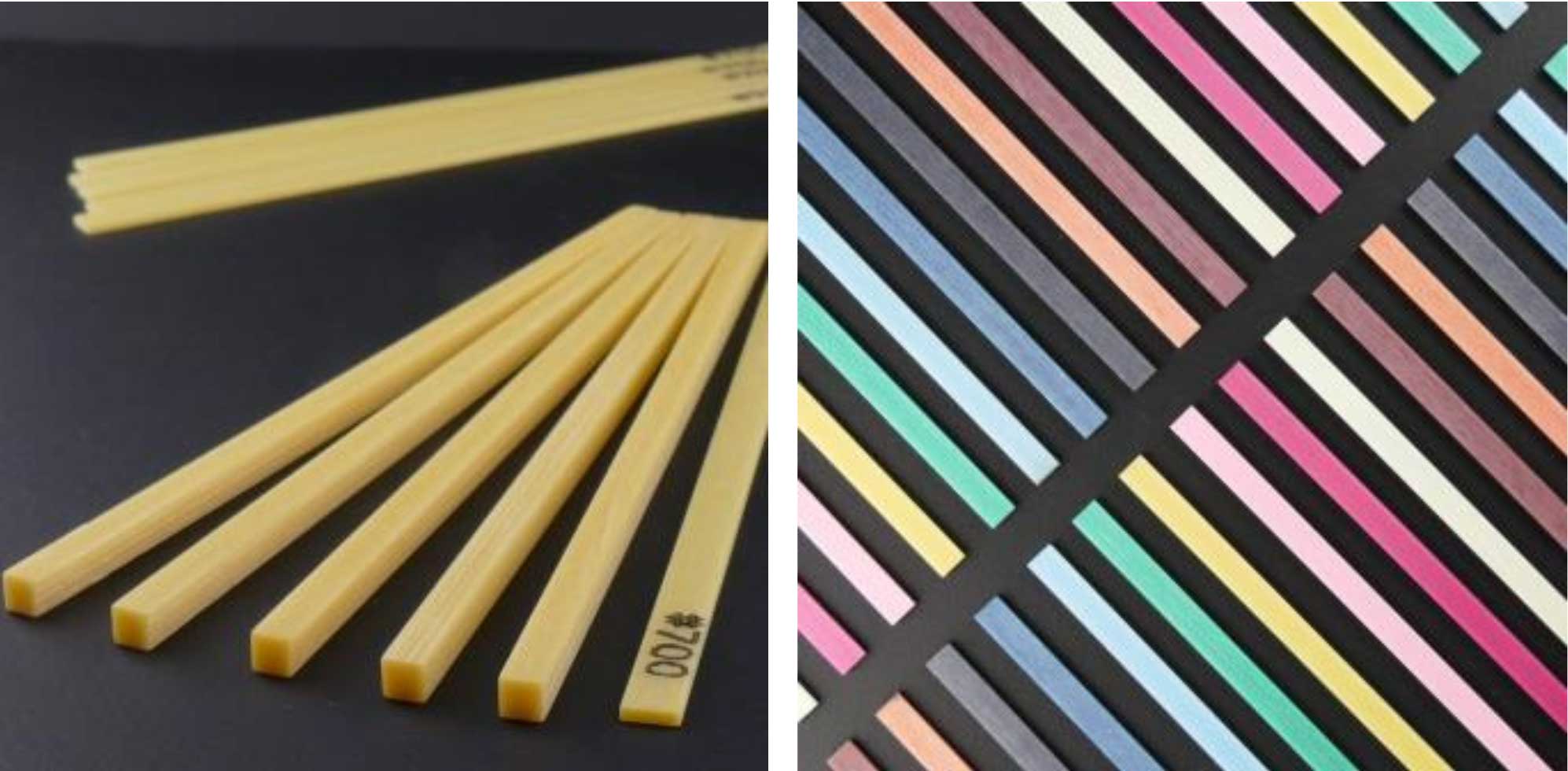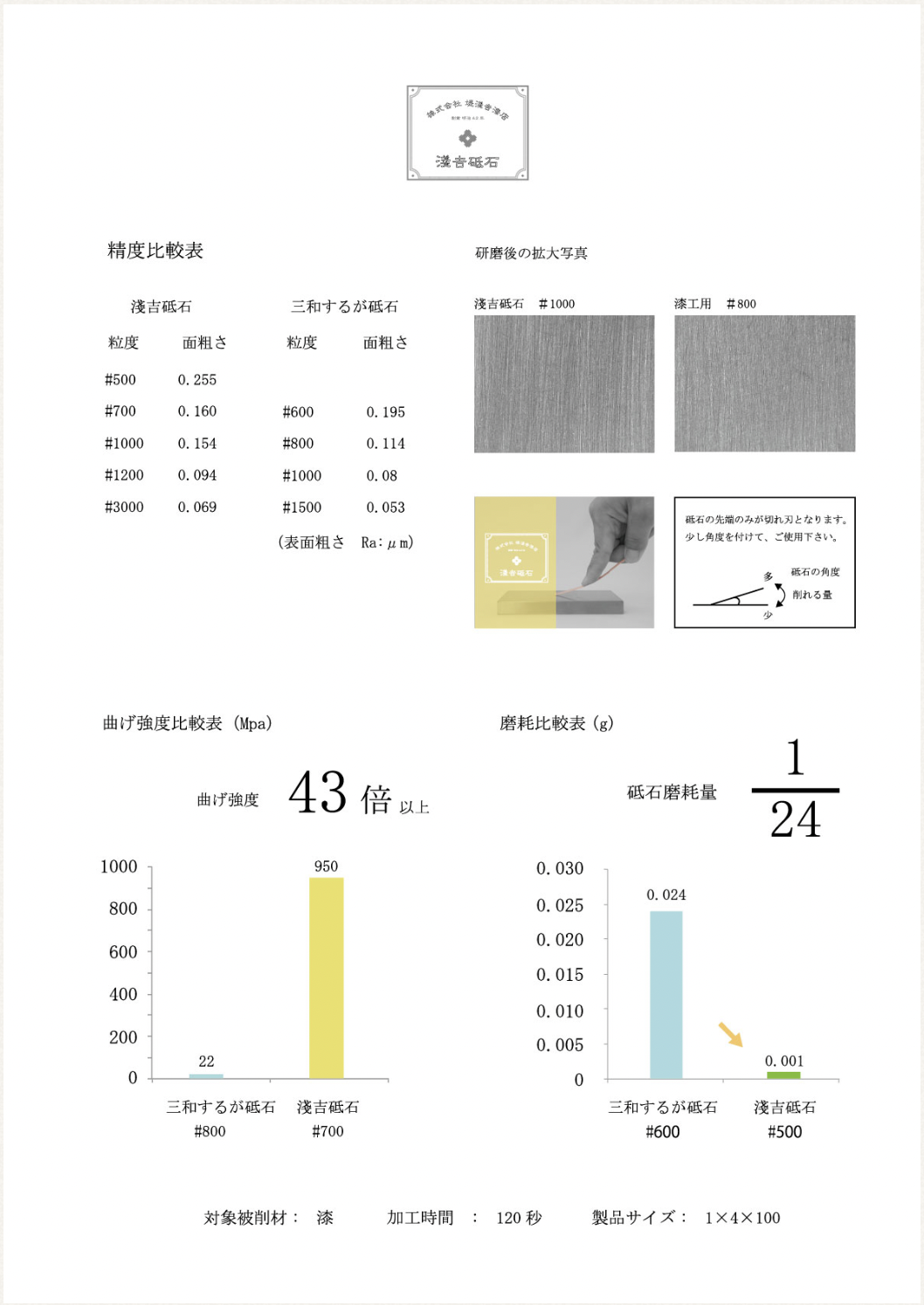Asakichi grindstone
Natural charcoal, such as roseki charcoal, suruga charcoal, and peony, has been used as a polishing material in lacquer art since ancient times. It is still in use today, but due to securing raw materials, lack of human resources, and a drastic decline in demand, etc., the spread of lacquerware whetstones to replace natural charcoal is progressing. There are particle sizes suitable for various situations, from base polishing to light color polishing, but while there are various techniques and many processes, I think there are times when polishing fine parts. At that time, I think there are many people who until now have dealt with it by forming “needles” with charcoal or whetstones. However, even when making needle charcoal, due to the characteristics of charcoal and whetstones, it is not uncommon for them to break quickly or become tattered, and there were voices wishing to develop a “lacquer grinding wheel to replace needle charcoal.”
Therefore, we developed the “Asayoshi Whetstone” with the cooperation of a whetstone manufacturer. It uses a completely different method from conventional methods for manufacturing grindstones for lacquerwork, and even though it is thin and long so that it is easy to use for needle charcoal, it “doesn't break.” Compared to conventional whetstones, the “life span is much longer (no decrease).” Furthermore, it is characterized by excellent polishing power. In addition to metal joints and lacquer carvings, which have been particularly requested, it is ideal for polishing small parts of maki-e, spirals, corners, and carvings. There are plenty of varieties, so you can choose and use the particle size and shape that suits your purpose.
There are ten people, ten different uses. It can be used in a variety of ways depending on ingenuity. An Asayoshi whetstone that is convenient if you have access to itchy areas. If you process the tip as shown in the photo, it will be easier to use.

Characteristics


Examples of use
Lacquer
Normally, a coating film that has been applied in many layers is carved with a chisel, and then the carved surface is polished

Conventional process and abrasive/particle size used [example] → when using Asayoshi whetstone [example] (steps 4 and 5 are the same as conventional processes)
- Sanwa Suruga Whetstone #600 (formed into needle charcoal and used) → #700
- Suruga charcoal (formed into needle charcoal and used) → #1000
- Crystal grinding stone #1000or #1500 (formed into needle charcoal and used) → #1200 ・#3000
- Sanwa Dori Abrasive Powder, White/Green Compound, Extra Fine
- Sanwaro Color Polishing Cream Compound Ultrafine Particles
Kintsugi
#180 · #250 Surface leveling when there is stubborn stains or lacquer
#360 (when it's hard to fall off at #400 or 500) rough sharpening
#400 · #500 rough sharpening
#700 When rust finish sharpening, medium coat sharpening, and paint paint brush marks are tough
#1000 ・#1200 Lacquer/Medium Coat Sharpener
#3000 Gloss Sharpener
* Another advantage is that compared to charcoal, the broth does not turn black easily, and is less likely to stain unglazed items and minor scratches.
Makie and Spirals
1. In the case of Takamakie
When raised, it is convenient for polishing corners on parts that are angled to rise from a flat surface.
For example, the base is #700 ~. The particle size changes according to the process.
2. Polishing the part where the shell was carved
For example, when carving thick shellfish to express leaf veins, it is necessary to polish the carved part, but until now, I think there are many people who have had trouble polishing this thin part. If you use an Asayoshi whetstone, you can polish without stress, which is convenient. For example, #800 → #1000 → compound.
When ordering
The substitute needle “Asayoshi Whetstone” is a product category”Asayoshi whetstone”You can choose from among

